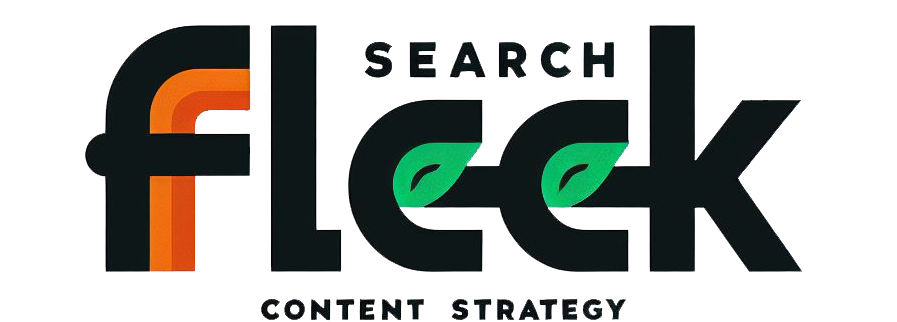Welcome to the exciting world of fitness blogging! Whether you’re a seasoned athlete or a passionate fitness enthusiast, sharing your knowledge and inspiring others can be incredibly rewarding.
This comprehensive guide will equip you with the tools and strategies you need to launch a successful fitness blog that not only informs but also motivates your readers to take action on their fitness journeys.
Finding Your Focus: Niche & Audience
The first step to building a thriving blog is identifying your niche and understanding your target audience.

Why Niche Down?
Focusing on a specific niche offers several advantages:
- Establish authority: By catering to a well-defined audience, you can establish yourself as a trusted expert in your niche.
- Content creation becomes easier: With a clear focus, you can tailor your content to address the specific needs and interests of your readers.
- Increased engagement: A targeted audience is more likely to connect with your content and find it valuable.
Identifying Your Niche
Here are some ways to brainstorm your niche:
- Areas of expertise or passion: Do you have a background in weightlifting, yoga, running, or another fitness discipline?
- Target groups: Consider focusing on beginners, athletes, busy professionals, or specific demographics.
- Combining niche and target audience: A niche like “prenatal yoga for busy moms” combines a specific fitness practice with a targeted demographic.
Understanding Your Audience
Once you’ve identified your niche, take time to understand your target audience. Consider the following:
- Demographics: Age, location, fitness level, income (if relevant to your monetization strategy).
- Goals and challenges: What are your readers hoping to achieve? What obstacles are they facing?
- Preferred content formats: Do they prefer text-based articles, video tutorials, or infographics? Understanding their preferences will help you tailor your content accordingly.
Building Your Blog’s Foundation
With your niche and audience in mind, it’s time to build the technical foundation for your blog.
Choosing a Platform
Several popular blogging platforms offer user-friendly interfaces and a range of features. Here’s a quick comparison of some leading options:
WordPress: A powerful and versatile platform offering extensive customization options and scalability. However, it requires some technical knowledge for setup and maintenance.
Wix: A user-friendly platform with drag-and-drop functionality, ideal for beginners. However, customization options might be more limited compared to WordPress.
Squarespace: Offers beautiful pre-designed templates and a user-friendly interface, good for creating visually appealing blogs. Customization options might be more limited than WordPress.
Consider factors like your technical expertise, budget, and desired level of customization when choosing a platform.
Selecting a Domain Name
Your domain name is your blog’s web address and should be:
- Memorable and relevant to your niche (e.g., [invalid URL removed])
- Easy to spell and pronounce
- Available for registration (check domain name availability with a domain registrar)
Securing Reliable Hosting
Your blog needs a reliable hosting service to store its files and make it accessible on the internet. Here’s a breakdown of two common hosting options:
- Shared Hosting: A cost-effective option where your website shares server space with other websites. This is a good starting point for new blogs.
- Dedicated Hosting: Offers more control and resources, ideal for high-traffic websites. However, it comes at a higher cost.
Choose a hosting provider with a good reputation, reliable uptime, and scalability to accommodate future growth.
Designing for Success: User Experience & Branding
First impressions matter, so creating a visually appealing and user-friendly blog is crucial.
Choosing a Theme
Select a theme that aligns with your brand identity and provides a pleasant browsing experience. Here are some key considerations:
- Appealing design: Choose a theme with clean aesthetics and a layout that’s easy to navigate.
- Responsiveness: Ensure your theme is responsive and adapts seamlessly to different screen sizes (desktop, mobile, tablet).
- Customization options: Choose a theme that allows you to customize colors, fonts, and layouts to match your brand.
Crafting a Compelling Brand Identity
A strong brand identity will help you stand out in the crowded fitness blogosphere. Here’s how to create one:
Logo design: Invest in a professional logo that reflects your brand’s personality.
Consistent color scheme and fonts: Use a consistent color palette and font style throughout your website and social media profiles for a cohesive look.
About Us page & blog bio: Create an “About Us” page and a blog bio that tells your story, explains your passion for fitness, and showcases your expertise.
Optimizing for Search Engines (SEO)
In today’s digital landscape, search engine optimization (SEO) is essential for driving organic traffic to your blog. Here’s how to optimize your content for search engines:
Keyword research: Identify relevant keywords that your target audience is searching for. Tools like Google Keyword Planner can help you with this.
Title tag and meta description optimization: Craft compelling titles and meta descriptions that accurately reflect your content and include relevant keywords. These snippets appear in search engine results pages (SERPs) and can influence click-through rates (CTRs).
Internal linking structure: Link to relevant blog posts within your website. This helps search engines understand the structure of your website and improves navigation for users.
Content is King: Creating Engaging Fitness Posts
The heart of any successful blog is its content. Here’s how to create high-quality content that keeps your readers coming back for more.
Building a Content Calendar
Developing a content calendar helps you plan and publish content consistently. Here’s what to consider:
Content variety: Plan a mix of content formats like blog posts, recipes, workout routines, and infographics to cater to different learning styles and preferences.
Posting schedule: Maintain a consistent posting schedule to keep your audience engaged. Aim for at least 2-3 posts per week in the beginning.
Crafting High-Quality Content
Here are some elements of high-quality fitness content:
Engaging writing style: Write in a clear, concise, and conversational style that is easy to understand for your target audience.
Visuals: Incorporate high-quality photos, infographics, and videos to break up text, enhance understanding, and visually engage your readers.
Actionable information: Provide clear instructions, step-by-step guides, and practical tips that your readers can implement in their own fitness routines.
Credibility: Cite credible sources, especially for medical or scientific claims, to establish yourself as a trustworthy resource.
Content Formats to Consider:
Here are some popular content formats to explore for your fitness blog:
- Blog posts: Offer in-depth guides on workout routines, healthy recipes, debunking fitness myths, or providing general fitness advice.
- Video tutorials: Demonstrate exercises, showcase proper form, and create engaging workout videos.
- Infographics: Use visually appealing infographics to present information like nutrition charts, workout routines, or healthy meal plans in an easily digestible format.
- Interviews with fitness experts: Feature interviews with qualified professionals like personal trainers, nutritionists, or sports therapists to offer diverse perspectives and valuable insights.
Building Your Community: Promotion & Engagement
Building a loyal readership goes beyond just creating great content. It’s about fostering a community around your blog and engaging with your audience.
Social Media Marketing
Social media platforms are powerful tools for promoting your blog and connecting with your audience. Here are some tips:
Choosing the right platforms: Identify the platforms where your target audience is most active (e.g., Facebook, Instagram, YouTube).
Creating engaging content: Tailor content specifically for each platform. Use high-quality visuals, inspiring quotes, and short workout snippets for Instagram, while longer-form videos and live Q&A sessions might be more suitable for YouTube.
Utilizing relevant hashtags and communities: Use relevant hashtags to help people find your content. Participate in fitness communities on social media to connect with potential readers and influencers.
Guest Posting & Collaborations
Guest posting on other fitness blogs can significantly expand your reach and introduce you to new audiences. Collaborate with other fitness bloggers on joint projects or content creation to leverage each other’s followings.
Email Marketing
Building an email list allows you to connect with your readers directly and send them updates, exclusive content, and promotional offers.
Building an email list: Offer valuable incentives like downloadable e-books or workout guides in exchange for email sign-ups.
Sending newsletters: Create regular email newsletters featuring blog updates, healthy recipe ideas, and exclusive content to keep your subscribers engaged.
Reader Engagement Strategies
Encourage interaction and discussions on your blog to foster a sense of community. Here are some ways to achieve this:
Respond to comments and questions: Actively engage with your readers by responding to comments and questions left on your blog posts.
Host contests and giveaways: Organize contests and giveaways to generate excitement and encourage participation.
Polls and Q&A sessions: Use polls and Q&A sessions to gather reader feedback and address their specific interests.
Monetization Strategies (Optional)

Building a successful fitness blog can lead to exciting opportunities for generating income. Here are some popular monetization strategies to consider:
Display Advertising
- Partnering with ad networks: Partner with reputable ad networks to display targeted ads on your blog. These ads can be a good source of passive income.
- Ensuring non-intrusive ad placement: Ensure the ads are placed strategically and don’t overwhelm your readers or detract from the user experience.
Affiliate Marketing
- Promoting fitness-related products: Partner with companies that offer fitness products or services relevant to your niche. You can earn commissions by promoting their products through affiliate links on your blog.
- Transparency and trust: Be transparent about your affiliate partnerships and only recommend products you genuinely believe in.
Selling Digital Products
- E-books: Develop and sell e-books on specific fitness topics like workout routines, healthy meal plans, or motivational guides.
- Workout plans: Create downloadable workout plans tailored to different fitness levels and goals.
Offering Online Coaching/Courses
- Personalized training programs: Offer personalized online coaching programs where you provide tailored workout plans and ongoing support to clients.
- Online courses: Develop and sell online courses on fitness topics, offering in-depth video tutorials, downloadable resources, and community access.
Analytics & Tracking: Measuring Your Success
Understanding your audience and how they interact with your blog is crucial for making data-driven decisions and optimizing your content strategy. Here’s how to track your progress:
Understanding Website Traffic Metrics
- Page views: The total number of times a page on your website is loaded.
- Unique visitors: The number of individual visitors to your website within a specific timeframe.
- Bounce rate: The percentage of visitors who leave your website after viewing only one page. A high bounce rate might indicate a lack of engagement with your content or navigational issues.
Utilizing Analytics Tools
- Google Analytics: A free and powerful tool from Google that provides detailed insights into your website traffic, user behavior, and audience demographics.
- Social media insights: Utilize the built-in analytics tools offered by social media platforms to understand your audience engagement on those platforms.
Tracking Engagement
- Comments: Monitor the number and quality of comments on your blog posts.
- Shares: Track how often your content is shared on social media.
- Social media mentions: See how often your blog or brand is mentioned on social media platforms.
Analyzing Data & Making Adjustments
By regularly analyzing website traffic data, social media engagement metrics, and reader feedback, you can identify what resonates with your audience and what areas need improvement.
- Refining your content strategy: Analyze which content formats and topics generate the most engagement and adapt your strategy accordingly.
- Improving user experience: Use traffic data to identify areas on your website that might be causing users to leave prematurely and make improvements to navigation or content placement.
Conclusion: Staying Motivated & Growing Your Blog
The world of fitness blogging is exciting and rewarding. By following this guide, you’ll have the tools and strategies to build a successful blog that informs and inspires others. Remember, focus on your niche, create high-quality content, engage with your audience, and stay passionate about your journey. You’ve got this!
Emon Anam, CEO of Search Fleek, isn't your typical digital guru. He brings a unique blend of financial expertise (former banking pro!) and digital marketing mastery to the table. A self-proclaimed "SEO Sherlock Holmes," Emon unlocks content secrets for local businesses and SaaS companies. But beyond the keyboard, he's a devoted family man, music enthusiast, and cricket champion. Let Emon weave your digital success story!
AI Writing Disclaimer
This post was initially researched and outlined by me. The content was then generated by an AI language model using the provided information. The final text has been reviewed and edited by me for accuracy and clarity.




